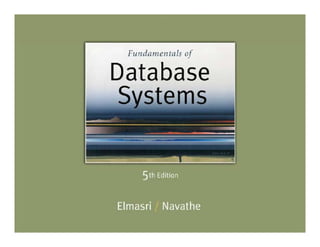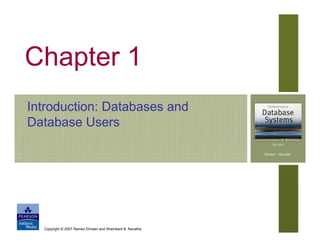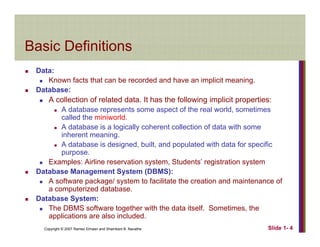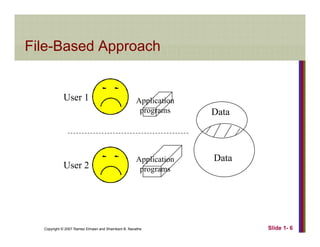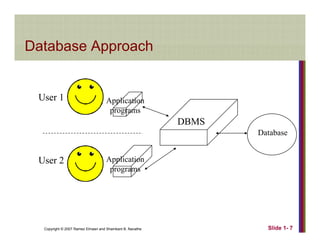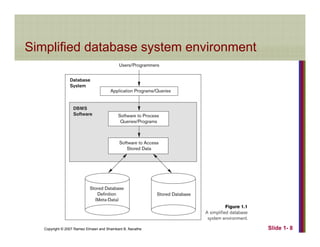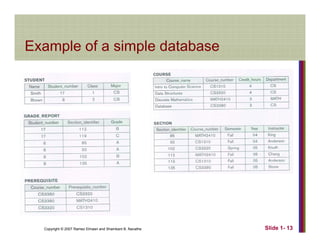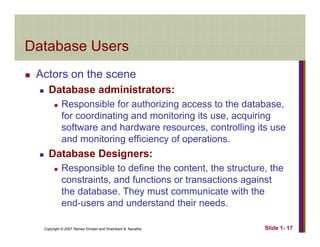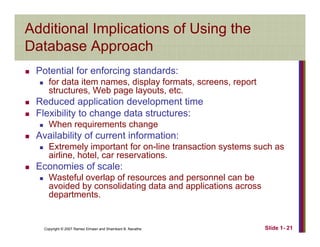The document provides an introduction to databases, defining key concepts such as data, databases, and database management systems (DBMS). It emphasizes the advantages of the database approach, including data sharing, redundancy control, and security, while also outlining circumstances when a DBMS may not be necessary. Lastly, it identifies different categories of database users, including end-users and administrators, highlighting their roles in managing and interacting with databases.
